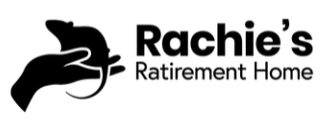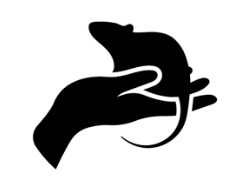Rat First Aid Kit
These items are useful to have on hand for rat care.
This list is intended to be quite comprehensive to be helpful to breeders and rescues as well, and so isn't all necessary for most pet owners, and the information isn't a replacement for vet care.
Items:
Scales: tracking weight is a very good way to monitor changes in health
Ultrasonic nebulizer and neb box: treating respiratory illness with saline, salbutamol or antibiotics
0.3mL insulin syringes: snap off the needles without removing the protective lid, for dosing very small quantities of medicine and hand rearing babies
1mL syringes: needleless, for dosing and feeding medicine
Larger syringes: flushing out abscesses and wounds
Band-aids: for treating bites on humans
Stethoscope: Listening to chest sounds and heartbeat in rats who struggle with being held.
Medicine box: Store medications in opaque boxes that block out light, many are deactivated by UV. You may need two; one for the fridge and one for the cupboard
Heat pad: Useful for helping sick rats recuperate or comforting elderly and palliative care animals, and vital for hand rearing babies. Electric heat mats with thermostats can be handy, Snugglesafe microwave pads are also fantastic.
Sturdy hospital tub or cage: Important to have on hand for emergencies and vet trips. Different to carriers in that it needs to be easily cleaned, is safe for overnight stays, and be able to attach a water bottle.
Torch or headlamp: to look inside ears and other areas
Vet wrap/cohesive bandage: used to bandage up rats who are at risk of chewing open surgical sites or injuries.
Notebook or spreadsheet: To track weight and health information, writing down dates helps a lot with treatment decisions.
Nail clippers: Nail maintenance may be needed for rats with mobility issues or those whose scratching irritates and opens up sores or wounds.
Tweezers: For removing foreign bodies or managing open abscesses and cysts
Gloves: Sturdy leather or metal mesh gloves allow safer handling of rats who may be biting because of distress or neurological issues, ie pain or seizure.
Disposable gloves: Reducing infection potential and practicing good hygiene during wound care
Medicine box:
F10sc: vet grade disinfectant for cleaning cages and accessories, can be used in a nebuliser under vet instruction
F10 barrier cream: germicidal wound coat, safe to lick. Bepanthen antiseptic cream is a safe alternative.
Iodine: for treating bites on humans and injuries on rats
Nutrigel or Nutripet: a high calorie nutrient concentrate used for rehabilitating sick rats
Di-Vetelact/Wombaroo Puppy Milk: Vital for hand rearing babies, soy based infant formula will do in a pinch. Also good for adding condition to sickly rats or mixing into a wet mix with pellet to promote feeding.
Styptic pencil/styptic powder/cornflour: Used to staunch bleeding on injuries like foot or tail bites, vital if keeping rats with blood clotting disorders such as some blue lines.
Vetbond: Similar to superglue, it safely and quickly closes minor wounds such as tension slices/superficial gashes, allowing them to heal cleanly.
Electrolyte fluids or powder: Used for helping rats recover from dehydration and heat stress, a vital part of a summer rescue kit. Unflavoured or “Lemonade” flavoured ones are a hit.
Painkiller/anti-inflammatory: Metacam is the vet prescribed option, there are two concentrations so always check the dosage. Infant ibuprofen can be used as an alternative under vet guidance, do note the dosage and rate differs and off label use can come with complications.
Antibiotics: Will need to be dispensed or prescribed by a vet, enrofloxacin (baytril) and doxycycline are commonly used in combination to treat respiratory infections but there are many others such as azithromycin, gentamicin, and amoxicillin.
Theophylline (Nuelin/Bisolvon): a bronchodilator used to open up airways, does have some negative side effects which may impact other illnesses, does interact with some commonly used antibiotics such as azithromycin.
Salbutamol/ventolin: can be in the form of a puffer, but more useful as a nebulisable form. A bronchodilator and relaxant used to relieve RI symptoms in conjunction with antibiotics.
Saline: For use in nebuliser or flushing out wounds and irritated areas
A sachet of baby food or Nutri-Grain paste: Mixing medications into so that the rat will eat them willingly. The paste works well as the rats are attracted to the protein.
Selamectin or ivermectin: Used for parasite treating, primarily for mites and lice. Selamectin is the chemical in Revolution, and is much safer than Ivermectin, which is commonly used by breeders and those with many rats. Ivermectin especially has a risk of overdose, use carefully and under guidance.
Blu-kote/Cetrigen: an antimicrobial wound dressing useful for treating many kinds of open wounds such as pressure sores.
Article by Grover Greenfield
Image by Alison Dower
Originally published 04 Nov 2019

